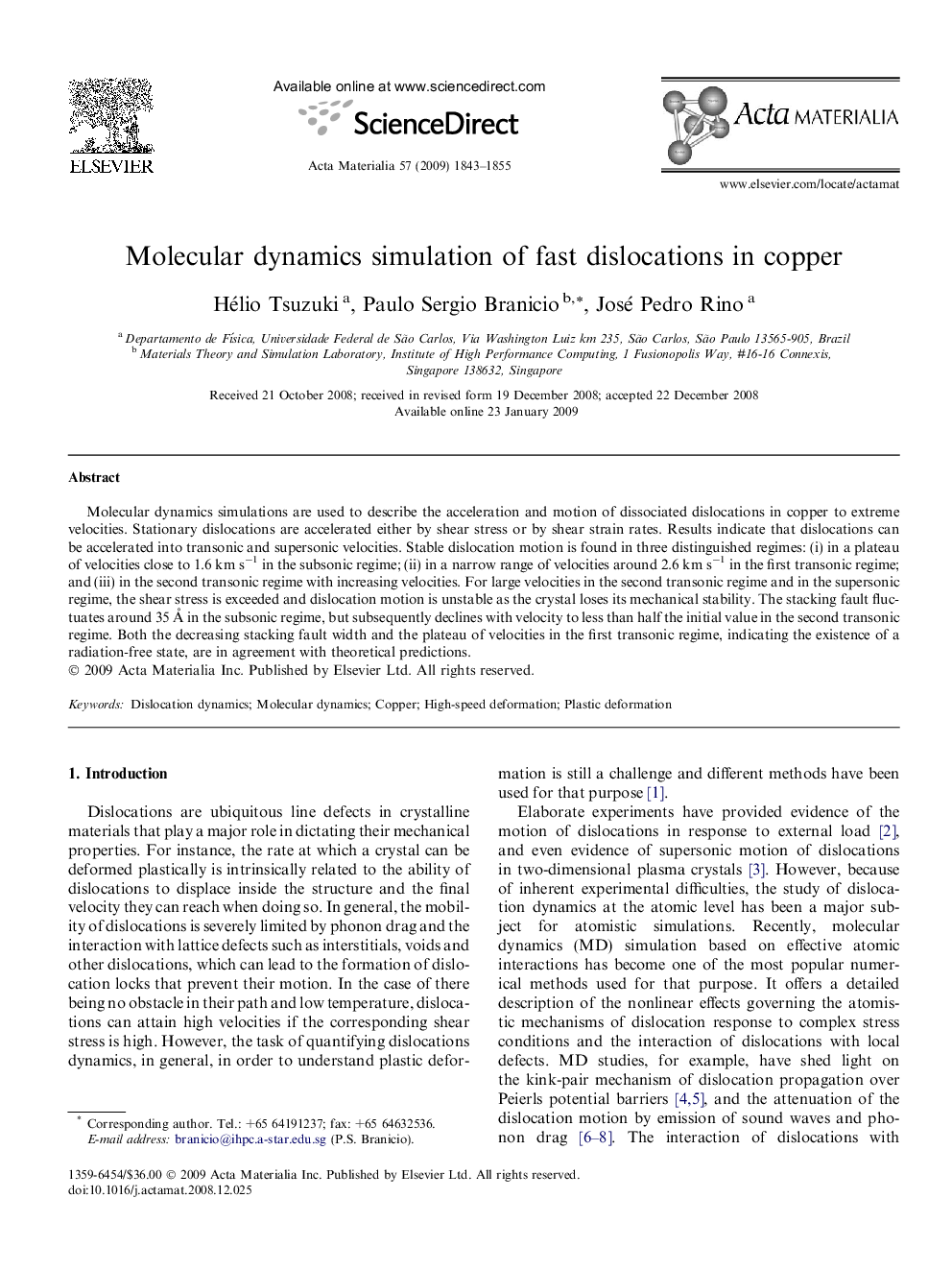| Article ID | Journal | Published Year | Pages | File Type |
|---|---|---|---|---|
| 10620784 | Acta Materialia | 2009 | 13 Pages |
Abstract
Molecular dynamics simulations are used to describe the acceleration and motion of dissociated dislocations in copper to extreme velocities. Stationary dislocations are accelerated either by shear stress or by shear strain rates. Results indicate that dislocations can be accelerated into transonic and supersonic velocities. Stable dislocation motion is found in three distinguished regimes: (i) in a plateau of velocities close to 1.6 km sâ1 in the subsonic regime; (ii) in a narrow range of velocities around 2.6 km sâ1 in the first transonic regime; and (iii) in the second transonic regime with increasing velocities. For large velocities in the second transonic regime and in the supersonic regime, the shear stress is exceeded and dislocation motion is unstable as the crystal loses its mechanical stability. The stacking fault fluctuates around 35 Ã
in the subsonic regime, but subsequently declines with velocity to less than half the initial value in the second transonic regime. Both the decreasing stacking fault width and the plateau of velocities in the first transonic regime, indicating the existence of a radiation-free state, are in agreement with theoretical predictions.
Related Topics
Physical Sciences and Engineering
Materials Science
Ceramics and Composites
Authors
Hélio Tsuzuki, Paulo Sergio Branicio, José Pedro Rino,
